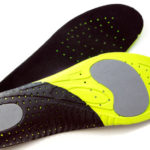 Orthotics Aren’t All Created Equal
Orthotics Aren’t All Created Equal
Orthotics can be “funny business”, if you ask me. So many professionals, with varied skill levels and backgrounds are making orthotics these days—podiatrists, chiropractors, orthotists, physical therapists, athletic trainers. You can even stand on a pressure plate in your corner drug store and have a computer tell you which pair of pre-packaged orthotics you should buy!
As an Orthopedic, physical therapist, I regularly come across patients who I believe would really benefit from having custom orthotics fabricated for them. These are most typically patients, many of whom are athletes, who have moderately to severely flattened arches and have come to be treated for foot, ankle, or knee pain.
Orthotics can be a necessity for healing because a dropped arch, either on one side or both feet, will create abnormal mechanics in the joints and muscles of the foot and leg—which can be the primary reason why that patient is experiencing pain, or bony wear and tear, in the first place. Note that a singularly dropped arch may be a sign of a leg length discrepancy, where the leg of the flatten arch is longer than the other leg. If this is the case, when the two orthotics are made, some additional posting under the heel of the shorter leg will do the trick.
When looking for a properly fabricated orthotic, I have a few “rules”:
- The orthotic product must run the full length of the foot.
- When correcting for flattened arches, the “lift” should NOT come through the arch (molded/firm arch) but rather from the inside portion of the heel (medial calcaneus) and the inside edge of the ball of the foot (1st metatarsal head). Our arches were never created to be weight bearing structures—that is why they are lifted off the floor!
- When the patient stands barefoot atop on the orthotics (on the bare floor, not in a shoe), the orthotic should adequately correct the alignment of the foot, ankle, and knee.
Many times, I’ll have my patient pull their previously fabricated orthotics from their shoes and ask them to stand on them—only to find that the orthotics cover merely 2/3 the soles of their feet (doesn’t reach to the ball of the foot), have a rigid (and reportedly uncomfortable) arch structure, and do not correct the malalignment of the lower limb(s).
If you have a mild issue, you can use store bought orthotics, but even then, you’d be better off buying them from a runner’s shop than from your drugstore. The key words, when looking to prop up dropped arches with a prefabricated orthotic is “pronation control”.
So, do some investigating if you are in the market for orthotics. Correct fabrication can mean the difference between a lifelong healing device and something you throw in the back of your closet after a month’s time.